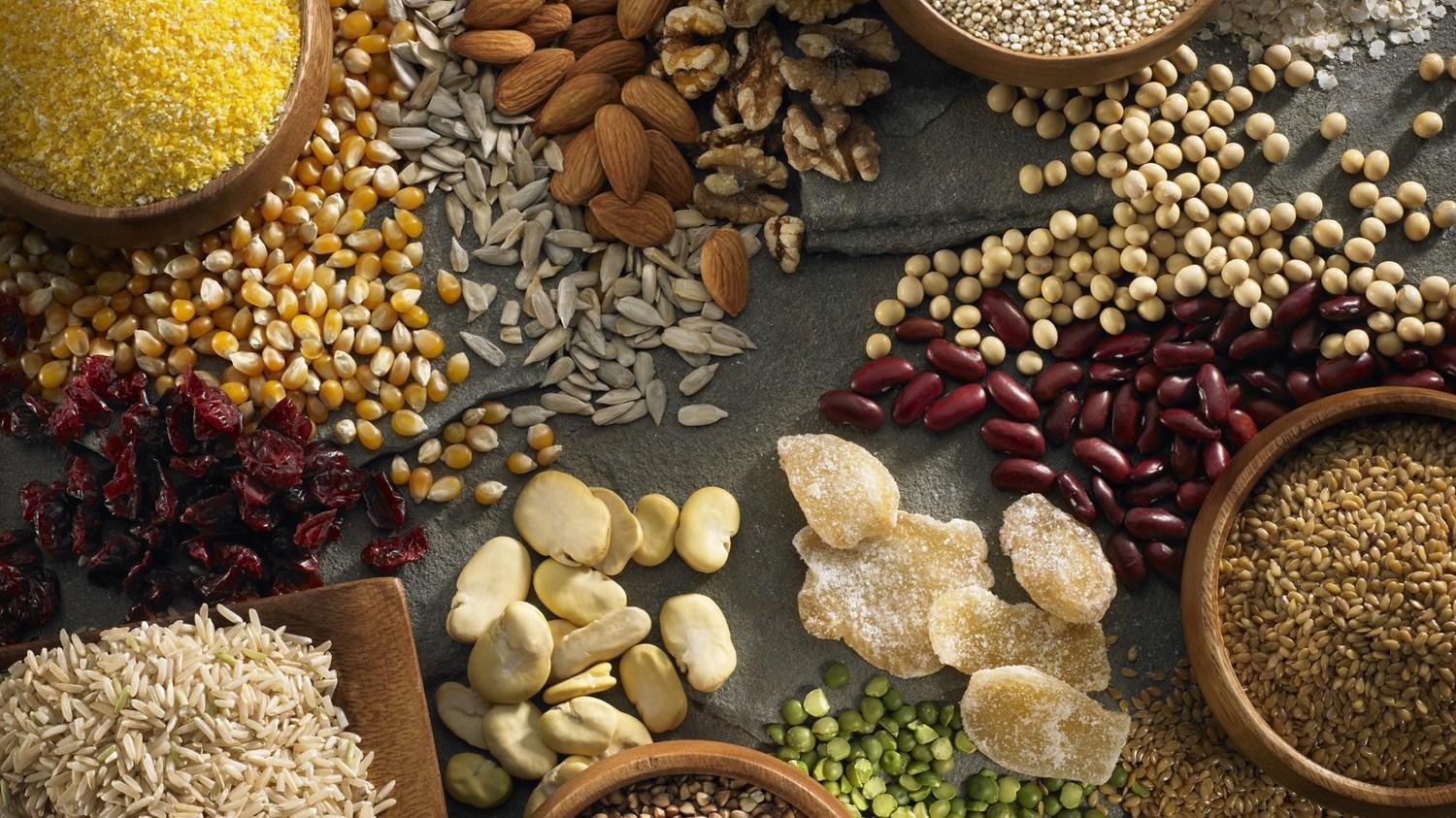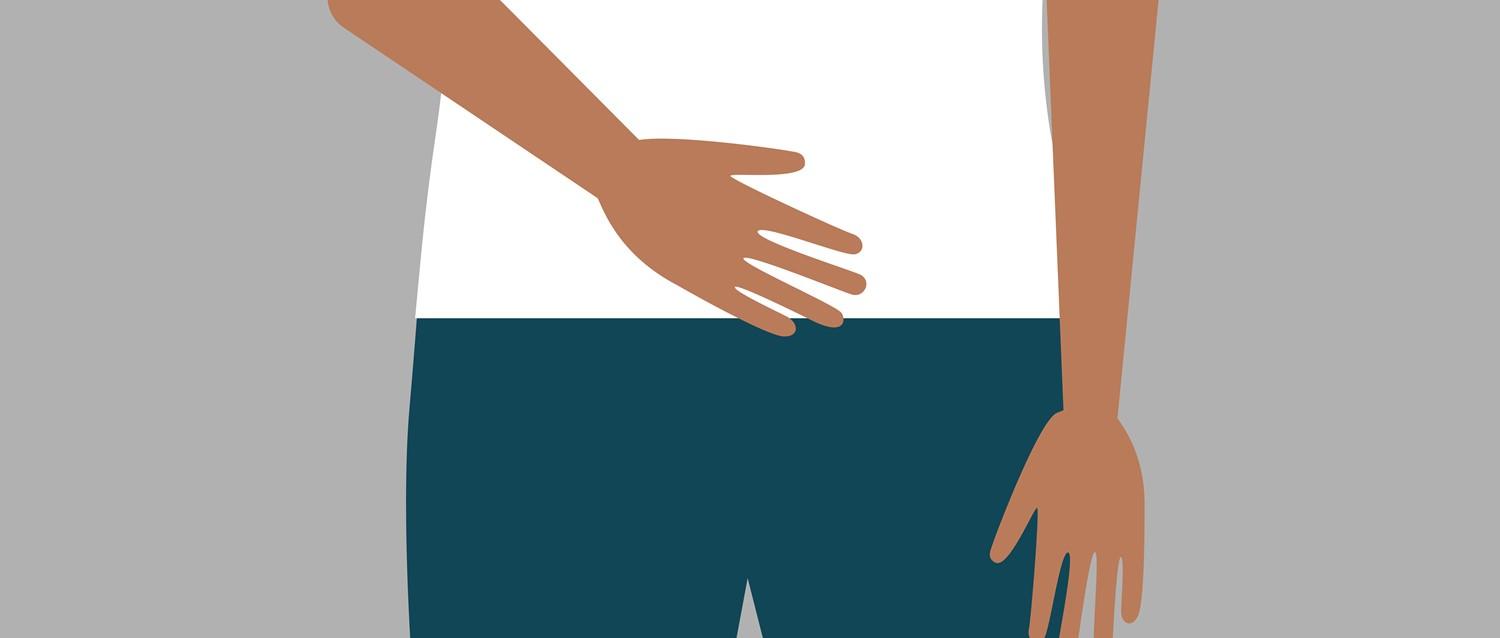
Coeliac disease diet sheet
Peer reviewed by Dr Helen Huins, MRCGPLast updated by Dr Colin Tidy, MRCGPLast updated 11 Sept 2017
Meets Patient’s editorial guidelines
- DownloadDownload
- Share
- Language
- Discussion
Coeliac disease is a condition that causes inflammation in the lining of part of the gut (called the small intestine). The lining of the gut contains millions of tiny tube-shaped structures called villi. These help food and nutrients to be digested more effectively into the body. But in people with coeliac disease, the villi become flattened as a result of the inflammation. This means that food and nutrients are not so readily digested by the body.
In this article:
Continue reading below
The gluten-free diet
Managing coeliac disease simply involves removing all sources of gluten from your diet. There are sources that might seem obvious. However, there are some foods that might contain hidden sources of gluten. This is why it is important to understand what to look out for on the label.
Reading labels and identifying gluten in foods
By law, if a food contains gluten it must be listed on the label. Many processed foods contain gluten, as it is used as an additive or foods become contaminated during the production process. Therefore, it is important to check the labels when out shopping.
Avoid products that contain any of the following:
Wheat.
Barley.
Rye.
Spelt.
Contaminated oats (see below).
Malt and malted barley (found in breakfast cereals, sauces, pickles and confectionary).
Not all foods that are gluten-free will mention this on the label, so always check to see whether it contains gluten. The crossed grain symbol is used by many manufacturers to highlight that a product is gluten-free. Some manufacturers may use their own symbol. Other products may simply state it on the packaging. For example, you may see:
Gluten-free
Suitable for coeliacs
Free from gluten
Foods that contain gluten
Checking the labels is useful when identifying foods that contain gluten. However, it's helpful to have a general idea of what foods to avoid and what foods may be allowed.
Food Group | Foods Allowed | Foods to Avoid |
Cereals and flour | Cornflour, polenta, potato, cassava, bean and lentil flour, split pea flour, millet, quinoa, buckwheat, rice (all types), maize, arrowroot, sorghum, teff, amaranth. Breakfast cereals allowed are: some branded and equivalent supermarket brands of corn-based or rice-based cereals - eg, cornflakes, rice snaps, honey nut cornflakes. (Always check the label as some varieties may not be gluten-free.) | Wheat, rye, barley, bulgar wheat, spelt, durum wheat, triticale, khorasan wheat (Kamut®), wheat flour, wheat starch, wheat bran, oat bran, semolina, couscous, malt and malted barley. Avoid all wheat-based breakfast cereals and muesli. |
Breads, cakes and biscuits | Gluten-free products specially manufactured (supermarkets have specialised ranges): eg, breads, biscuits, pizza bases, flour mixes, cakes. Products made from cereals or flours from the allowed list. Products made without flour (check the label for other gluten sources) or with gluten-free flour. | All bread and bread products - eg, croissants, bagels, pitta bread, chapatti, naan bread, crispbreads, crackers, matzos, muffins, scones, croutons, pancakes, pizza, yorkshire puddings, wafers and ice cream cones, pastries and pies. |
Pasta, rice and noodles | All types of fresh rice. Rice noodles (check the label). Gluten-free pasta, corn pasta. | Any fresh, dried or tinned pasta, and noodles. Processed rice found in salads or ready meals. |
Potatoes | All fresh potatoes. Some crisps (check the label). Home-made chips made from fresh potatoes. | Processed potatoes - eg, potato salad, waffles, some chips, instant mash, crisps or potato snacks. |
Meat, fish and poultry | All fresh meat, fish and poultry. Tinned fish- eg, tuna/salmon. Smoked, kippered or dried fish. Gluten-free sausages. Gluten-free fish fingers. | Some processed meats or products coated in batter or breadcrumbs. Pies, puddings, suet, stuffing, fish fingers, chicken nuggets, fishcakes, sausages, burgers, haggis, taramasalata, rissoles, Quorn®. |
Milk, dairy, eggs and dairy alternatives | Natural plain cheese, fresh milk, cream, condensed milk, yoghurts, fromage frais, soya milk, goat's milk, coconut milk, almond milk, rice milk, dried skimmed milk powder, eggs. Check the labels where possible. | Check the labels of processed cheese, low-fat cheese spreads, artificial cream and yoghurts. Yoghurts containing muesli or cereals. Scotch eggs. |
Fats and oils | Vegetable oil, olive oil, butter, lard, reduced fat/low-fat spreads (check the labels). | Suet, some brands of low-fat spreads. |
Fruit, vegetables, nuts and pulses | Fresh, dried or tinned fruit, vegetables, nuts, beans, pulses and seeds. Check the labels of some baked bean brands. | Processed fruit and vegetables that are coated in breadcrumbs/or in sauces. Some brands of nuts. |
Desserts and puddings | Meringues, sorbets, ice creams, jelly, mousses, custard powders, milk puddings made with gluten-free ingredients. Always check labels of these food products. | Trifles, sponge puddings, semolina, tarts, and puddings made from flours in the 'foods to avoid' list. |
Snack foods | Prawn crackers, rice cakes, poppadoms, home-made popcorn, gluten-free crispbreads and crackers. Check the labels of these products. | Pretzels, Bombay mix, snacks made from flours in the 'foods to avoid' list. |
Confectionary, sweets and preserves | Sugar, golden syrup, icing sugar, treacle, molasses, jam, honey, marmalade, peanut butter, boiled sweets and jellies. | Some chocolate bars, toffees and sweets (always check the labels). |
Soups, sauces and seasonings | Fresh salt and pepper, herbs, spices, vinegars (eg, rice wine, balsamic), homemade fresh soups, gluten-free soups, sauces and seasonings. | Packet soups and sauces, gravies, soy sauce, ketchups, mayonnaise, salad dressings, pickles and chutneys, stuffing and stuffing mixes, stock cubes, bouillon, Worcestershire sauce (some brands may be gluten-free). |
Drinks and alcohol | Tea, coffee, fizzy drinks, squashes, cordials, fresh juices, milk, some cocoa powders, cider, spirits, wines, liqueurs, sherry, port. | Barley drinks or squashes, cloudy fizzy drinks, malted milk drinks, instant vending machine drinks, some milkshakes and sports drinks, beer, lager, stout, ale. |
Other | Bicarbonate of soda, fresh and dried yeast, marzipan, yeast extracts, tofu, food colourings and flavourings, gelatine. Always check the labels. All medicines prescribed by a GP are gluten-free. | Baking powder, some medicines and vitamins. |
Continue reading below
Foods naturally free from gluten
If foods are being excluded from the diet, it is important to ensure you are still having a balanced diet to obtain all the nutrients you need. Foods naturally free from gluten include fruit, vegetables, meat, fish, rice, potatoes, beans, pulses, nuts, eggs, milk and dairy. Sticking to a gluten-free diet can be difficult, so including plenty of these in the diet will make it easier.
Vinegar is gluten-free. Barley malt vinegar is produced from barley. However, the processing involved removes barley protein and therefore removes the gluten from the final product. These products will still be labelled as containing barley in the ingredients list.
Gluten-free alternatives
Living with a diet free from gluten can be difficult and so there are products available to help keep the diet varied and easier to maintain. These products will also help to provide you with the energy and nutrients you need.
There is a wide range of gluten-free products available. It's likely that you'll find gluten-free alternatives of most foods. Products available include the basics such as gluten-free bread, pasta, flour, plain biscuits and cakes, crackers, crispbreads and pizza bases. Luxury products include biscuits, cakes, muesli, muffins, stuffing mix, confectionary, cereal bars, fish fingers, chicken nuggets and other convenience foods.
Many of the supermarket chains have gluten-free ranges. Some companies that provide gluten-free products include:
Free From
Juvela
Glutafin
Genius
Ener-G
DS-gluten free
Warburtons
Proceli
Barkat
Some companies offer free starter packs, so you can try a range of products and find ones that you prefer. Some gluten-free products contain Codex wheat starch, which improves the taste and texture of these items. This contains a very low level of gluten, which has been shown to be tolerated by most of those with coeliac disease. However, a small percentage of people who are highly sensitive to gluten may find that symptoms occur and so choosing products without Codex wheat starch may be more appropriate.
Gluten-free products can be expensive. However, you can obtain some of these products on prescription. Talk to your GP to get a prescription. Basic gluten-free products are usually available on prescription, although luxury items are not.
Oats
Oats can be part of a balanced diet in most people with coeliac disease, without causing damage or symptoms. These must be gluten-free, uncontaminated oats and so some products available on supermarket shelves may not be suitable. A list of manufacturers' products that are safe and free from contamination can be found on the Coeliac UK website (see below) and in their Food and Drink Directory.
Oats can be a useful addition to the diet, as they are a valuable source of fibre and improve variety in the diet. This makes it easier to comply with a gluten-free diet. Gluten-free oats can be introduced from diagnosis now. However, some people may find they have symptoms after eating oats. If this happens to you, tell your healthcare professional.
Continue reading below
Lifestyle advice
Contamination
Foods can become contaminated with gluten during processing or even during food preparation or storage at home. Ways to prevent contamination at home include:
Clean all surfaces before preparing foods.
Use your own storage cupboards for food, separate from any other foods containing gluten in the household.
Ensure food is stored in seal-tight containers.
Use toaster bags.
Use separate containers for jam, butter and chutneys or ensure that a clean knife is always used when serving.
Use separate utensils and chopping boards during food preparation or make sure these are thoroughly cleaned before use.
Make sure hands are thoroughly washed after handling gluten-containing food.
Make sure that others in your household are aware of the condition and the importance of avoiding contamination.
Eating out
When eating out it can be helpful to prepare and plan ahead. Call ahead to the chef to ask about gluten-free choices on the menu and explain your dietary needs. Some restaurants will be happy to cater for your needs and adjust dishes accordingly. Remember that cross-contamination can occur in restaurant kitchens and consider hidden sources of gluten that may be in restaurant foods. For example, sauces and gravies are often thickened with flour. Sometimes, chips may be fried in oil that has been used for deep-frying other products such as foods coated in batter or breadcrumbs.
Communicate with friends and family, explaining about cross-contamination, appropriate gluten-free foods and sources of gluten that may not be obvious. For example, some herbs, spices and flavourings.
Coeliac UK has a venue guide, highlighting the appropriate places to eat that are coeliac-friendly.
Travelling
Again, planning ahead is advised for travelling. If you are going on holiday, you may wish to book a hotel that can cater for your gluten-free dietary needs and inform hotels in advance. Self-catering may be an easier way to control a gluten-free diet.
If you are going to a place where you are unfamiliar with the local food, it may be worth having a look into what the foods are and how they are made, before travelling.
Ask the airline you are travelling with whether they have gluten-free meal choices for the plane journey. It can be useful to carry gluten-free snacks around with you when travelling, as it may not always be easy to find gluten-free products when out and about.
Overall balance of the diet
Once you have successfully achieved a gluten-free diet, it is important to consider other aspects of your diet to keep you healthy. A diet in line with the 'eatwell plate' will provide you with all the nutrients and energy you need. After commencing a gluten-free diet, the lining of the intestine will repair, restoring normal absorption of nutrients. This means that deficiencies such as iron-deficiency anaemia should begin to resolve and improve.
Calcium
Those with coeliac disease are more at risk of 'thinning' of the bones (osteoporosis). This is partly due to having poor absorption of calcium when gluten has been included in the diet. Those with coeliac disease have a higher requirement for calcium. An intake of 1000 mg-1500 mg each day is recommended. Sources of calcium include:
Glass of milk/soya milk enriched with calcium (200 ml) | 245 mg |
Cheese (30 g) | 216 mg |
Yoghurt/soya yoghurt (one pot) | 225 mg |
Gluten-free bread fortified with calcium (two slices) | 300 mg |
Sardines with bones (100 g) | 460 mg |
Tofu (100 g) | 510 mg |
Dried figs (100 g) | 250 mg |
Broccoli | 50 mg |
Baked beans (half a tin) | 100 mg |
You may need a supplement if you are unable to meet your calcium requirements through diet. Additionally, vitamin D is necessary to help absorb calcium from food. We mainly obtain our vitamin D from sunlight, as it is not in many foods. Ask your GP or dietician whether you need calcium or vitamin D supplements. Additionally, you may want to ask your GP about having a DEXA scan. DEXA stands for dual-energy X-ray absorptiometry. This scan looks at how dense your bones are, so that any problems with your bones can be identified.
Iron
It can be helpful to include iron-rich foods in your diet to help you achieve normal iron levels. Animal sources are better absorbed by the body but iron is found in plant sources too. Vitamin C can help to absorb iron, so you may want to have a glass of orange juice with meals, eat a piece of fruit after a meal or include fruit and vegetables at mealtimes.
Iron is found in:
Red meat such beef or lamb.
Other meat, including chicken and turkey.
Fish and shellfish - eg, sardines, mackerel, salmon, prawns, mussels.
Liver, kidney, pâté.
Beans and pulses - eg, lentils, chickpeas and baked beans.
Green leafy vegetables - eg, broccoli, cabbage, spinach.
Nuts and seeds - eg, Brazil nuts, almonds, peanut butter.
Dried fruit - eg, raisins, apricots and dates.
In summary, the gluten-free diet is the only treatment for coeliac disease. Eliminating gluten completely from your diet for life should help to improve any damage that has occurred to the lining of the intestines. This will improve symptoms and your ability to absorb nutrients from food.
Patient picks for Bowel problems

Digestive health
Crohn's disease in children: How to support your child
When your child has been diagnosed with Crohn's disease there is a lot to take in and it can feel overwhelming - it can take time for family life to adjust. Here, we explain how the condition might affect your child, and share tips and resources to help you and your child cope with the day-to-day challenges.
by Amberley Davis

Digestive health
How to treat bowel incontinence
Bowel incontinence (or faecal incontinence) is undeniably a difficult subject to talk about. Despite being very common, the problem tends to be stigmatised, with many sufferers failing to mention it to their medical practitioner. Nearly half of all people with incontinence wait at least five years before seeking help.
by Abi Millar
Continue reading below
Article history
The information on this page is peer reviewed by qualified clinicians.
11 Sept 2017 | Latest version

Ask, share, connect.
Browse discussions, ask questions, and share experiences across hundreds of health topics.

Feeling unwell?
Assess your symptoms online for free
Sign up to the Patient newsletter
Your weekly dose of clear, trustworthy health advice - written to help you feel informed, confident and in control.
By subscribing you accept our Privacy Policy. You can unsubscribe at any time. We never sell your data.